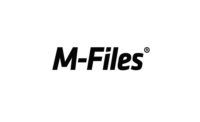Whether you’re training employees, tracking defects, or conducting audits, a good quality management system should make life easier.
More than one million organizations can’t be wrong. It makes sense that ISO 9001 certification would garner such numbers: an ISO 9001 initiative is all about making the organization better. This seems to have universal appeal, judging from the 178 countries in which ISO 9001 certification is in place. But how does this affect you and your organization? Continuous improvement happens through efforts on many fronts, from properly training employees to getting management support. In most cases, navigating the continuous improvement process involves software. Software plays a role in managing defects, complaints, audits, training, documents, and a host of other factors. In particular, quality management software helps organizations meet industry standards such as ISO 9001. The standard allows organizations to choose how to go about this.
ISO states that: “ISO 9001:2015 allows an organization flexibility in the way it chooses to document its quality management system (QMS). This enables each individual organization to determine the correct amount of documented information needed in order to demonstrate the effective planning, operation and control of its processes and the implementation and continual improvement of the effectiveness of its QMS.”
When it comes to documenting your quality management system, how does your software fit in? Does the standard and the software work well together? Let’s imagine a scenario in which the software works to improve the business and also adhere to ISO 9001 requirements. No longer in the three-ring binder years of quality systems past, today software is essential in a range of quality management tasks. Here we will take a closer look at employee training, corrective and preventive action, and audits.
According to ISO, the benefits of ISO 9001 include:
- Work in a more efficient way as all your processes will be aligned and understood by everyone in the business or organization. This increases productivity and efficiency, bringing internal costs down.
- Meet the necessary statutory and regulatory requirements.
- Expand into new markets, as some sectors and clients require ISO 9001 before doing business.
- Identify and address the risks associated with your organization
From iso.org
Employee Training
Behind any successful organization are well-trained employees. In fact, in the annual Quality Leadership 100 survey, companies are ranked on the average number of hours that employees receive training, along with factors such as continuous improvement, internal quality programs, and registration to various standards such as ISO 9001.
Software can assist in this training mission. Whether ensuring employees have received training, developing training goals, or quizzing employees to be sure the training has been understood, software can take care of all of these responsibilities. Managing employee skills through job descriptions, past employment history, and certifications is also possible and creates auditable records. Hunting down information is no longer a laborious process. Did Ms. Jones take the new Ishikawa diagram training course? Now that question can be answered in a matter of minutes.
Corrective and Preventive Action (CAPA)
Resolving corrective and preventive action (CAPA) can be difficult. If this is a challenge at your organization, you’re not alone. This question came up on the ASQ Ask the Standards Experts blog (https://asqasktheexperts.com). An individual asked about how to resolve a CAPA issue: “We have a Corrective Action and Preventative Action (CAPA) system, and we find that CAPAs are almost always completed late—even though we do have an extension request form for CAPAs, and the system sends automated reminders to employees in advance. What can we do to resolve this issue and avoid late CAPAs?”
ASQ senior member Jim Werner, voting member to the U.S. TAG to ISO TC 176, of Medical Device Quality Compliance (MDQC) LLC, replied, “You must make certain that the CAPA system is robust. Not every little problem is a CAPA. A good way to weed out the CAPAs from the non-CAPAs is to ask: is this an issue that requires an investigation into the root cause? And, does this problem require corrective action to fix it? If the answers are yes, then it is probably a CAPA.”
In addition, he suggested ranking the CAPA based on risk, as high, medium, or low. He explained that the system should have a way to involve top management, include a statistical analysis of the time it takes to complete CAPAs, and discussed potential consequences for employees. Benchmarking with other organizations and comparing guidance documents was also recommended.
It should be noted that although the company did have a system sending automated reminders to employees, software is just the first step in this process. Employees have to take things from there. Even the best software will not eliminate the need to actually examine root causes involved that may have led to a defect.
Audits
It all comes together at audit time. During an audit, it is especially critical to have a detailed history of records. The paper trail must show information that was created, modified, maintained, archived, retrieved or transmitted. Without the proper software, this task could become needlessly difficult—not to mention stressful.
On the ASQ Ask the Standards Experts blog, Bill Aston, managing director of Aston Technical Consulting Services LLC, explains it this way: “The effectiveness of future QMS audits will depend upon auditors that can apply their collective knowledge of ISO 9001:2015, risk assessment, and management requirements, as well as their in-depth knowledge of the industries, processes, products, and systems, audited.”
If your organization has a ready answer to any audit question, you will be on your way to sailing through audits both internal and external. Of course, the hard work of quality management takes time and effort, and support from all levels of the organization. But it can be made simpler with the right tools.
ISO 9001: 2015 doesn’t specify how organizations must get results. But if followed, it can help an organization continuously improve. The correct software is one way to make this happen.




